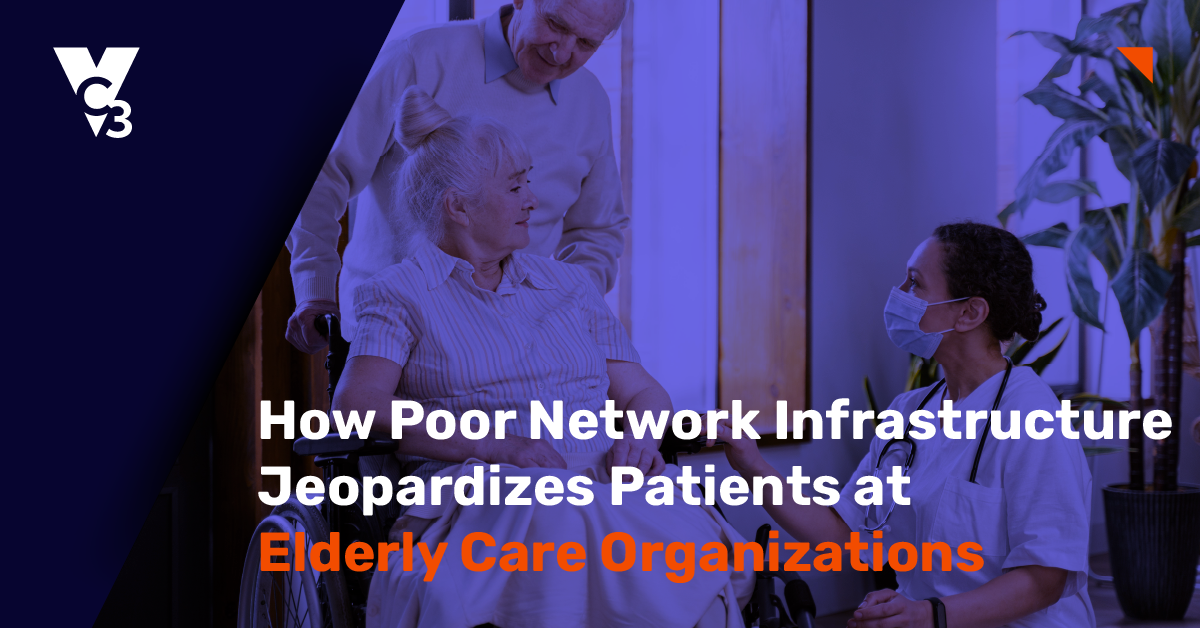John Gambill, Jr. interviewed Anthony Buonaspina, the CEO of LI Tech Advisors in Babylon, New York. LI Tech specializes in ADA (Americans with Disabilities Act) compliance for websites; something that DD organizations in Ohio must provide.
John: Anthony, tell us about yourself and LI Tech Advisors. Everything from “A to Z.”
Anthony: I started as an electrical engineer, and have worked in IT for 30 years now. Our company got involved with ADA compliance about ten years ago. My IT company is on Long Island where we serve businesses both here and in other areas of New York.
Nine years ago, my cousin, who is blind asked me about accessibility online. A client asked me this years ago as well. At that point, I learned everything that they needed so I could assist. I eventually became a CPACC Certified Accessibility Expert. At that point, I was one of the first 30 in the world; now there are hundreds. Ideally, all IT service providers should get this certification.
The ADA was initiated in 1973 with the Rehabilitation Act, and in 1990, it became law. What this means is that websites must be compliant with the ADA and accessible to those with disabilities.
In 2018, the Justice Department sent a letter to Congress stating that websites must be treated as “brick and mortar” sites. Websites must be compliant with the WC3 guidelines.
Because all of this isn’t completely nailed down, there have been a lot of lawsuits; about 2,000 lawsuits this year already. From a Federal Government standpoint, this is about one lawsuit every business hour.
Can you tell us more about the accessibility requirements?
CPACC functions under the International Association of Accessibility Professionals (IAAP). You can get different levels of certification based on core concepts or coding.
I tell any developer to go to start with the W3 website and WCAG guidelines. The level of WCAG that we strive for is 2.1AA.
Government websites must comply with Section 508. If you’re certified under WCAG you’ll be so under Section 508; WCAG is a pretty high standard.
Some of the community colleges are now offering an accessibility minor for website developers because they realize this is a necessity.
The accessibility guidelines also apply to applications on multiple devices like iPhone, iPad, etc.
How Does an ADA-Compliant website help someone who’s blind?
Anthony: For example, if someone is blind, they need to be able to use something called a screen reader. It reads out loud what is on the screen. This only works if the website was designed in accordance with ADA guidelines. If you’re out of compliance, your opening up your organization to a potential lawsuit.
As a Managed Service Provider (MSP), I take on the responsibility of educating my clients about this requirement. Even though I’m not a website designer, the fact is that because my company deals with business technology, I could be called in on a lawsuit. Advising my clients gets me out of potential litigation.
How much does it cost to get a website in line with ADA guidelines?
Anthony: The cost is minimal if you’re building a new website. The website will look and act just as you like with beautiful graphics and so on. But there are tags built-in so a person who’s blind or has mobility issues can access the information. You must be able to put the mouse aside and use the keyboard only.
Are there other benefits to having an ADA-compliant website?
Anthony: Once you get your website compliant with ADA guidelines, your SEO (Search Engine Optimization) goes off the charts; meaning that it’s much better. This is because Google itself is “blind.” Google will be able to find, read and understand your site much better.
And from a “health” standpoint, it’s much healthier. Headings, descriptions and tags are all in order and working as they should. Your website will also be easier to navigate. For example, I like to use the tab key to move around a site. It’s much faster. You can do this with an ADA-compliant website.
There are 3 reasons a business should have an ADA-compliant website:
1. You’re doing the right thing for people with disabilities.
2. You’re opening yourself up to a market that most companies didn’t realize existed. Just in this country alone, there are 25 million visually impaired people. In the world, it’s 350 million people. All disabilities combined together amounts to 1 billion people. In the U.S. alone, people with disabilities control 8 trillion dollars of disposable income. It’s a huge marketplace.
3. If you don’t have a site that’s accessible, you can open yourself up to a lawsuit. And you don’t want to go there. Because, once you are involved in a lawsuit, not only must you be compliant by a deadline that’s set, you typically must attain a higher standard than typical. Plus, 25 percent of the companies that get sued, get sued again.
The states with the most businesses getting sued are California, New York, Florida and Texas. All the other states are seeing lawsuits now as well. It’s important, that no matter where you are, you want to make sure that your website is compliant.
Unfortunately, smaller companies don’t have the deep pockets to do this, and they are becoming bigger targets for lawsuits. They end up paying close to $25,000 in legal fees when this happens. And, on top of this, they still need to have their site fixed. So it’s better to be proactive and do this from the start.
ADA Compliant sites are not only good business, but they’re also the right thing to do.
John: As you know, [VC3] serves the disabilities community in Ohio, so what you’re talking about and doing is with ADA compliance is very important to us; and not just from a business standpoint, but from an accessibility standpoint.
If you are an organization that says you serve people with disabilities, are you truly accessible? It’s the right thing to do; to make it easy for disabled individuals to engage your business. Some businesses don’t think about this.
Anthony: To make sure our clients’ websites are ADA-compliant, we have 65 disabled individuals at LI TECH who test and develop sites to ensure they are accessible.
When we work with businesses that want this service, we put our disabled testers on the phone call with them. They share their experiences with the businesses’ websites. The product is so much better when the developer “sees” the problem. And it makes them better developers.
For example, we made QuickBooks accessible and were able to put 500 disabled people back to work.
Our disabled employees are dedicated, loyal, and wonderful to work with. I can’t say enough about how gratifying and rewarding it is to work with them.
John: Plus, it must be so gratifying for them. They are directly benefiting people like themselves with the testing that they’re doing for you. And you’ve made your disabled people better at their job while helping businesses provide better customer service.
Anthony: We also try to talk to the customer service reps, so they understand how the screen reader works for the disabled person on the other end. This is where a lot of lawsuits start; where the customer service person can’t help the disabled person on the other end access what they need. We prevent this with the training we provide for customer service on the ADA-compliant website.
John: This is so important. When I speak to groups, I’m going to include this information to raise the awareness about how important ADA-compliant websites are.
Anthony: 83 percent of the people who are disabled became this way after they were born. So, it’s something that can happen to any of us.
If the world is already set up for people with disabilities, you’ll know that if this happens to you, you’ll still be able to function and work. And believe it or not, some of the disabled people I work with outperform those who aren’t disabled. It’s amazing, and a wonderful thing.
John: [VC3], formerly GO Concepts has been focused on IT service and support for the DD community since 2013. Helping those who help others is what we do. We don’t work directly with disabled people, but we try to help those who are. It’s a great feeling to know that we can do this.
What’s the process of taking a non-compliant website to an ADA-compliant one?
Anthony: The first thing we do is take a quick look at a website to see how bad it is or how good it is at meeting the needs of the disabled.
Many businesses use website templates. In this case, we can take a template and fix 500 pages at once. In some cases, we need to do a deep-level audit.
We start with a basic guide, and if you already have a development team (a CPACC-certified developer), you can give the work over to them.
We have a helpdesk that your developers can contact if they have any questions while working on website accessibility. Or you can have us come in and work on the sprint cycle. We can bring in testers onsite to help. It all depends on the company.
Unfortunately, smaller companies don’t have the deep pockets to do this, and they are becoming bigger targets for lawsuits. They end up paying close to $25,000 in legal fees when this happens. And, on top of this, they still need to have their site fixed. So it’s better to be proactive and do this from the start.
Sometimes a business will have a marketing firm working on their site. What we do is partner with the marketing firm to ensure ADA-compliant websites for their clients. They may have 50 or more clients, so we work out an arrangement with them to fix all the sites.
These marketing companies can get pulled into a lawsuit if one of their clients gets sued. Plus, they can make the ADA compliance a profit center by charging just a little bit more a month to maintain a website’s compliance. It’s a minimal cost to the marketing company because they can spread this across all of their clients.
We also offer training. Developers need training on ADA-compliance, and how to keep a site compliant.
For example, you may need:
- Descriptive text on images.
- Navigation to be accessible.
- All the buttons and tags to be accessible.
- To be able to hit every menu item using the tab key.
- To label all the fields in any form.
These are the kinds of things we look for in the initial check. We check all heading orders. This is the “low-hanging fruit” that you need to ensure is correct, and what typically puts a site out of compliance.
We function under the 80/20 Rule; we try to ensure that 80 percent of the major blocks are removed. The other 20 you can attack later. Any accessibility statement should reflect your efforts. It should let people know who they can contact if they have any problems navigating the website.
What happens with third-party add-ins?
Anthony: This refers to things like a shopping cart, a blog on your website, or when you embed YouTube videos. Regardless of what it is, you must make sure it’s accessible.
The business must ensure the third-party add-ins are accessible; they are the ones who will be sued, not the third party. If the third party can’t do this, then you’ll need to pick another one; like a new shopping cart for your website.
You may want to include in your usability statement that you use third-party add-ins, and that you work with them to ensure accessibility.
What happens after everything has been fixed?
Anthony: We do ongoing testing; monthly, quarterly or whenever something has been changed. When we do this, we put a “good housekeeping” label on the site to advise people that the site is being checked. You should also write this in your usability statement, so folks know that ongoing checks are occurring.
You’ve spent money getting your site into compliance, and you want to keep it this way. So these ongoing checks are necessary.
We perform manual testing. The automatic testing is only 50 percent accurate. For example, we do this for American and United Airlines. They are under requirements from the Department of Justice to test their sites for accessibility.
What happens if you get sued for non-compliance?
Anthony: Most of the clients who come to us have already been sued. This is very unfortunate. When this happens, you should:
- Get an attorney.
- Put up a usability statement on your website saying that you’re working towards compliance.
- Train your staff so they answer calls correctly.
- Remediate the site so it’s in accordance with the guidelines.
- Test the site on an ongoing basis.
Engage a website developer who is certified in accessibility. If your website developer isn’t certified, then you need a company like LI TECH. We can also train your website development team so they know how to ensure your site is accessible and meets the guidelines.
When you advertise for a website developer, you should always advertise that you want them to be certified in accessibility.
John: I know this can be overwhelming for some. This is why I wanted to make sure this information got out. Not just the big companies, any business or organization is susceptible to being sued for non-compliance.
Anthony: All companies should be doing this. It’s a benefit for all of them. The only ones that are exempt are religious organizations and the entities they control, and private clubs. Everyone else must adhere to these guidelines.
What should you do if you don’t have a large budget?
Anthony: No matter what your budget is, there are ways to make your website accessible.
If you’re designing a site, incorporate accessibility from the ground up. It doesn’t cost any more to design accessibility in.
Problems typically come in after a site is designed. This is where the costs can add up. If you have a designer who knows how to build and test websites for ADA compliance, it’s a no-brainer.
If you have a navigation menu that not accessible, this is pretty easy to fix. If nothing else, just hit the main blocks of the site to get started.
If you use WordPress or Wix, natively they make commitments for accessibility. The only time it may fall out of compliance is with your third-party add-ins. With WordPress and Wix, you can look for accessibility templates. So, if you want a small website with only five pages or so, you can design it using Wix or WordPress.
There are also online services that let you scan a site to learn how bad it is. However, come to us if you want to do a full certification.
Remember, the cost of a lawsuit is a lot more. It’s important to take whatever steps you can to work towards compliance.
John: It’s apparent from what you’ve told us that a lot of companies are reactive rather than proactive when it comes to ADA-compliant websites. This is what gets them into trouble with litigation. Hopefully, as we continue talking about this, we can get more organizations to be proactive.
In terms of our website, we have our accessibility statement up; we’re ensuring everything on our site that needs remediation is being handled, and we’re working with your team at LI TECH to ensure we remain ADA-compliant.
We will also be talking to our clients and related organizations to get this message out there and to let them know that this service is available.
Wondering if your website is ADA compliant? Not sure how to implement the steps necessary to be in compliance? Learn more about our website design and hosting services.





